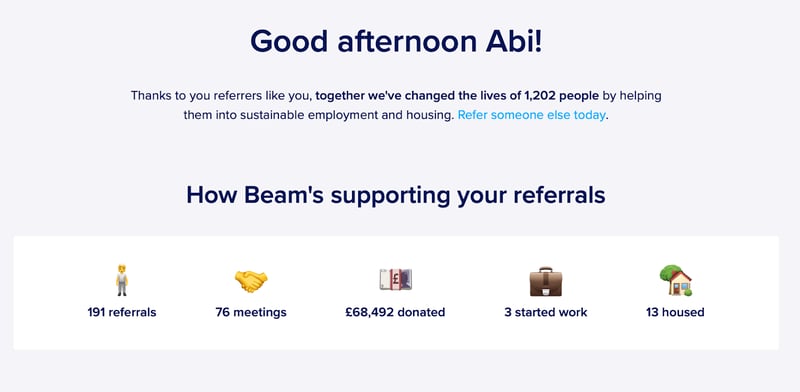5 years ago, I found myself in the prison system for 11 and a half months. As I came up to 12 weeks before release, I was met by resettlement support staff. They completed a 30-minute assessment, asking me questions about my housing, employment and release planning. I was lucky enough to move back home with my parents and return to university while working part-time. On the other hand, one of my close friends from my prison sentence was going to be released homeless, with no employment prospects and a lack of awareness of how to access support.
Sadly, this is the reality for a lot of people leaving prison. It’s hardly surprising, then, that 50 percent of people serving sentences of 12 months or less go on to re-offend. Across the sector, they are known as the revolving door population, a group with complex needs such as addiction, mental health, homelessness and long-term unemployment. And with a growing remand population from Covid-19 shutting down our court system and leading to a backlog of cases, it’s clear that we need to test new approaches to reduce reoffending.
I work for Beam, a social enterprise that harnesses the power of people and technology to support homeless people, including those leaving prison, into stable jobs and homes. Working in partnership with local authorities, central government and people who use the criminal justice system’s services, we’ve identified some key ways that digital innovation can benefit the sector and reduce reoffending.
Personalising support
People leaving prison often face multiple unique barriers when it comes to finding a job or moving into a home, meaning a one-size-fits-all approach is unlikely to work. Thankfully, technology is making it easier than ever to personalise support for people leaving prison, and give them a sense of agency.
One way we’ve approached this at Beam is through our online fundraising platform, where we give people the opportunity to pursue a future that’s aligned with their goals and values. Each person gets a page detailing their personal story and ambitions, like this one here.

In John’s case, a difficult childhood led to a life of crime and addiction. He’d spent his life stuck in that revolving door but finally decided at the age of 50 to change the trajectory of his life and check into rehab upon release. But that was only the start. For John, his dream was to become an electrician - a career that would enable him to get back on his feet - and move into a stable home. Of course, that would cost a lot of money - but what if a community of people chipped in?
We worked out that John needed exactly £4,846 to pursue his electrical qualifications, purchase a toolkit, safety boots, laptop and pay for travel. By personalising support in this way, John was able to qualify as an electrician and move into a safe property - leaving a life of crime and homelessness behind him for good.
Building new networks
For many people leaving prison, it’s the beginning of another sentence, one where they must overcome the stigma attached to being a prison leaver or an ex-offender. This can leave people feeling dejected, hopeless and afraid for the future. Giving prison leavers access to a support network who provide encouragement and mentorship is a key part of building their confidence and showing them there’s another way.
We’ve already seen that technology has the power to build incredible online communities. LinkedIn, for example, is brilliant for professionals interested in networking and finding new opportunities. But what happens if you don't have that network in the first place? Or if you lack the confidence to build new connections?
Through Beam’s platform, people leaving prison are able to share their stories in their own words and connect with an online community of 10,000 people who spur them on and become part of their new support network. It’s also a safe place for prison leavers to connect with their peers and read motivating stories of others in a similar position who have turned their lives around.
Guy’s story is one that particularly resonated with me. As a teenager, he was locked into a lifestyle of crime, hard drug use and homelessness. He said that working with Beam was the first time he had done something positive in his life. After sharing his story, 324 members of the public were inspired to become part of his new support network and sent him words of encouragement. He said “When I read the messages at the end of a hard week it really lifted my spirits and cheered me up.”
Joining up support
I recently had a call with an ex-prison governor who told me that “working in the prison service can be a thankless job, if you’ve done a good job, you will never see that person again”. This statement stuck with me. Unless someone reoffended and ended up back in prison, it was rare for people in the prison service to see the positive impact of their work.
Now, technology is making it easier for different stakeholders to join-up support around people leaving prison, measure their impact and improve the feedback loop.
For example, Beam works with more than 70 government partners who refer people to our service via a simple online form. They get a personalised dashboard, which includes live data on the status of each referral, their job and housing outcomes and feel-good updates which can be shared with their team. Sharing this data in a really personal, engaging way increases motivation amongst busy frontline staff, reminding them of the inspirational people they’ve helped on their way.

Referrers receive real-time updates on the people they’ve referred via a personalised dashboard
To conclude, technology and digital innovation has a pivotal role to play in modernising the criminal justice system, particularly when it comes to reducing reoffending. In 2023 and onwards, as we get closer to one HMPPS, a digitalised approach will improve the support for people leaving prisons and on probation while improving the morale of staff. Together, we can work together to create a criminal justice system that’s supportive, compassionate and effective.

Sobanan Narenthiran


